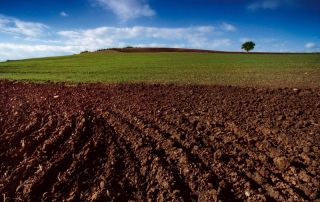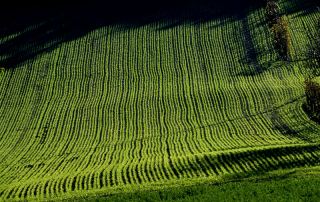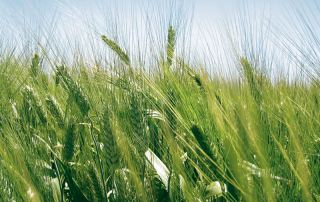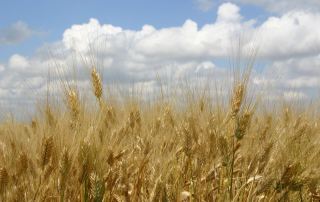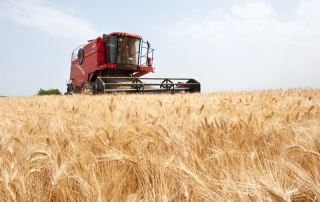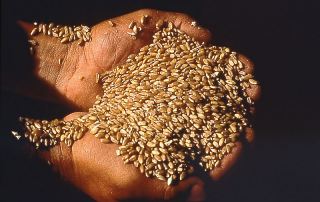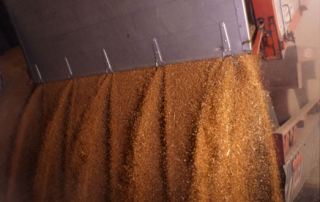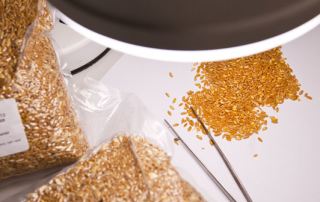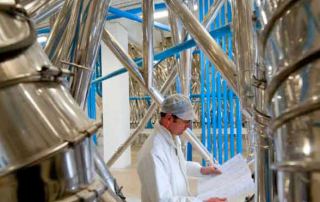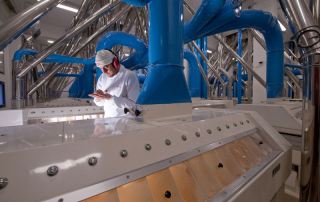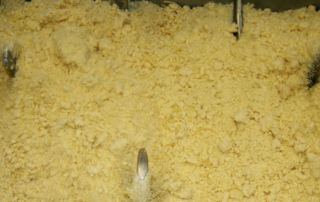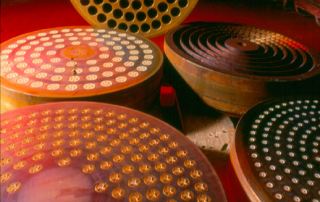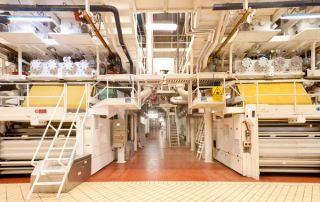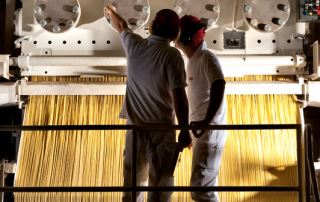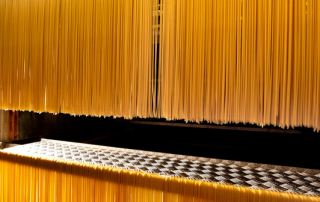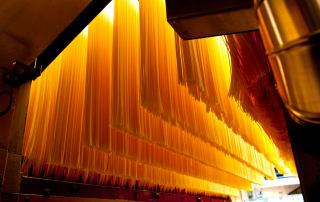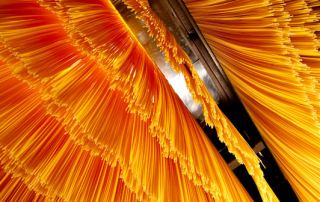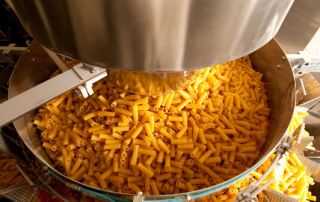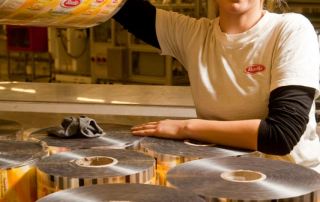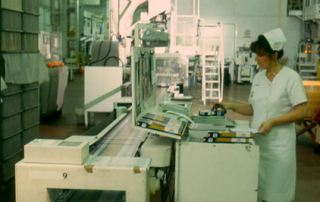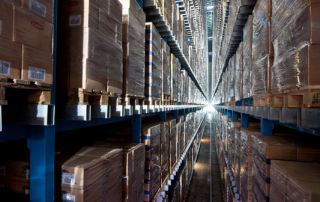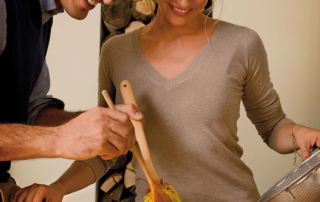From the land to the table – the phases of production of pasta
01 – Cultivation
In order to obtain good pasta, it is necessary to cultivate good quality wheat. In Italy, thanks to an ancient tradition reinforced by the Law in 1969, dry pasta is made exclusively with Durum wheat as it allows for a longer shelf life and gives the best yield. Nonetheless, we must remember that the Italian Durum wheat production is not sufficient to cover the needs of pasta factories, and these import large shipments of wheat from abroad – especially from the U.S.A., Canada, Russia and South Africa. In our regions, after plowing and preparing the land, wheat is sown in autumn. During winter, the seeds sprout and in springtime, the new plants grow and reach maturity around the month of June. Harvesting, today a mechanized operation, allows for the gathering of sheaves. From these the grain is extracted and is sent to the mill.
02 – Grinding
After undergoing lab testing, wheat is carefully sifted to eliminate impurities, vegetable elements, mineral soiling, and is sent to grinding. The grain is forced to pass through a narrow space where ribbed cylinders remove increasingly larger layers of material through several passages. This way, the bran is discarded and the desired grain size for the next processing phase is obtained.
03 – Semolina
Durum wheat Semolina, certified by the mill, arrives at the pasta factory to be processed. There, it undergoes quality control to verify it meets the requirements of the standards of quality, and then it is stored in dedicated silos. Before undergoing the kneading phase, semolina is sifted to eliminate any impurities. The raw materials used for the production of semolina pasta are only semolina and water. The rigorous, constant and continual dosage of the ingredients is an indispensable element for the production of quality pasta.
04 – Kneading
Semolina and water are inserted into a centrifuge that makes it possible to distribute the water in a uniform way on the surface of the grains of semolina. When semolina comes into contact with water, a glutinous reticulum begins to form as the hydration phase of starch and protein contained in semolina begins to take place. Gluten can absorb water up to 200% of its weight. Elasticity (in addition to water content) is one of the most important qualities that the gluten in semolina used to make pasta must possess. A good level of hydration of semolina is an essential condition to obtain a finished product of good quality. This operation is performed by the principal kneading machine that is made of a W shaped basin with two arm rods that ease the kneading. The blending motion pushes the dough towards an opening at the extremity of the rods from which the dough falls down into a basins where the next processing phases takes place. The last kneading phase happens in a pneumatic vacuum and is located transversally with respect to the main kneading machine. In this phase, air is eliminated since it would give the surface of the product a gray and dull aspect, forming small white bubbles.
05 – Shaping
By this time, the dough is a perfectly homogenized and compact viscous fluid. An endless screw moves it along and pushes it towards the head of the press, compressing it against the extruder, the perforated mold that makes it possible to shape the pasta. Before this, the dough goes through a stainless steel filtering net, of perforated lamina placed on the extruder that holds all of the impurities that might have escaped the previous filters. This stops any clots and regularizes the flow speed. The extruder has peculiar characteristics, which vary for every single pasta format to be manufactured. There are extruders for long pasta and specific ones for short pasta, featuring holes of different shapes and dimension for each format. To keep the shape given by the extruder, the pasta, that is still hot (114/120 F) and soft (29/33% of humidity), is impacted by a blow of hot air that creates very light drying on the surface, called “incartamento” (literally, paper glazing). Ventilation is used also to avoid contact between the pieces of pasta and to start the dehydration process of the product.
06 – Drying
Drying eliminates excess water contained in the dough. This operation, though, must take place without causing modifications to the structure of pasta. The pasta coming out from the extruder has a level of humidity that varies from 29 to 33 %. This level of humidity needs to be brought to 12,5% once the drying phase is concluded. This value is fixed by law since it insures a correct reduction of the microbiological activity that is responsible for alterations of the product. In this phase of processing, the pasta is mechanically transported in continuous way on frames, if it is a short format, or on rods if it is long. The product is brought into a controlled humidity environment regulated so to obtain the correct drying in a homogenous manner both in the inside and on the surface of the pasta.
07 – Packaging
After an adequate time of rest, the pasta is sent to packaging, where specific machines provide to weighing and inserting the correct quantities into the preformed boxes. The pasta placed in boxes or bags is then inserted in larger cartons to be shipped, and these are then piled up on pallets that are suitable for shipping.
08 – Shipping
The pallets are moved to the warehouse on conveyor belts, and then they are loaded onto transportation vehicles – trucks or train wagons – to be sent to the retail points. There, the pallets are dismounted and the cartons opened, and the single boxes are placed on shelves where consumers will be able to easily choose and purchase them.
09 – In the kitchen
Cooking in boiling water, pasta rehydrates and gains back its initial elasticity. The combination of shapes and condiments, often fruit of a centuries long tradition, creates the gastronomic miracle that we can experience everyday.



